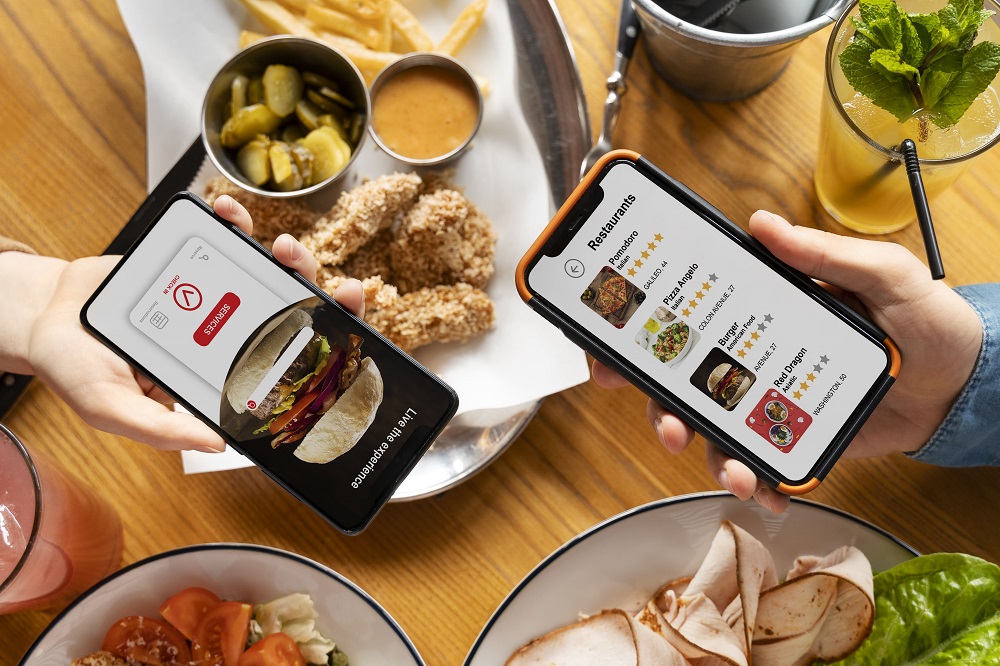In a world where convenience is king, online ordering apps for restaurants have emerged as a game-changer in the food industry. These digital platforms not only streamline the process of ordering food but also provide restaurants with a powerful tool to enhance their business. As we dive into the digital age, the online ordering app is revolutionizing the way we dine, offering benefits to both restaurant owners and customers alike.
The Rise of Online Ordering Apps
The digital transformation of the restaurant industry has been accelerated by a variety of factors, including changing customer preferences, the ubiquity of smartphones, and the global pandemic. Gone are the days of traditional phone orders and handwritten menus. Today, consumers can access a vast array of culinary delights at their fingertips. Restaurants have adapted to this changing landscape by embracing online ordering apps, and the benefits are immense.
Convenience for Customers
One of the primary reasons for the success of online ordering apps is the unparalleled convenience they offer to customers. With a few taps on their smartphones, diners can explore menus, place orders, and even pay without ever leaving their homes. Whether it's a busy workday, a relaxing evening at home, or a social gathering, online ordering apps cater to a wide range of customer needs.
These apps often feature user-friendly interfaces that make browsing menus and customizing orders a breeze. Additionally, customers can store their payment information securely, reducing the time it takes to complete transactions. The convenience factor is further enhanced with features like order tracking, estimated delivery times, and the option to reorder favorite meals with a single click.
Boosting Restaurant Revenue
While online ordering apps make dining more convenient for customers, they also offer a host of benefits for restaurant owners. From increased revenue streams to efficient management, these apps can be a game-changer for businesses.
Expanded Reach: Online ordering apps enable restaurants to reach a broader customer base. They can attract not only local patrons but also out-of-town visitors and tourists who may not have discovered the restaurant otherwise.
Data-Driven Insights: Restaurant owners can gather valuable data on customer preferences, order patterns, and peak dining times. This information helps them fine-tune their menus, optimize pricing, and make informed decisions to enhance the customer experience.
Reduced Overheads: Online ordering apps can reduce labor costs and streamline operations. They minimize the need for additional staff to manage phone orders, resulting in cost savings and improved order accuracy.
Upselling Opportunities: These apps often incorporate upselling features, such as suggesting add-ons, combo meals, or special promotions. This can boost the average check size and increase revenue for the restaurant.
Navigating the Competitive Landscape
As the popularity of online ordering apps grows, the competition in this space is becoming fiercer. To stand out, restaurants must offer a seamless, engaging experience for their customers. Here are some essential elements for success:
User-Friendly Design: The app's user interface should be intuitive and visually appealing. Easy navigation and an attractive layout can encourage customers to explore the menu and place orders.
Reliable Ordering System: Ensuring that orders are accurate and delivered on time is crucial. A robust backend system is essential to manage orders efficiently and coordinate with delivery or pickup services.
Secure Payment Processing: Customer trust is paramount when it comes to online payments. A secure payment gateway is a must to protect sensitive financial information.
Feedback and Reviews: Encourage customers to leave feedback and reviews. This not only helps in improving service but also builds credibility and trust.
Marketing and Promotion: Utilize the app to promote special offers, discounts, and loyalty programs. Push notifications and email marketing can keep customers engaged and informed about new offerings.
Meeting the Challenges
While online ordering apps offer numerous advantages, they also come with certain challenges that both customers and restaurant owners need to address.
Delivery Times: Ensuring timely delivery can be a challenge, especially during peak hours or adverse weather conditions. Restaurants need to manage customer expectations and communicate clearly regarding delivery times.
Technical Issues: Customers may face technical glitches or errors while using the app. It's crucial for the restaurant to provide prompt customer support and resolve issues efficiently.
Quality Control: Maintaining the quality of food during delivery can be challenging. Restaurants need to invest in robust packaging and ensure that their dishes are as delicious when they reach the customer as they are in the restaurant.
The Future of Dining
As technology continues to evolve, so will the role of online ordering apps in the restaurant industry. Virtual kitchens, augmented reality menus, and AI-driven recommendations are just a glimpse of what the future holds. Online ordering apps have proven their value in an increasingly digital world, and their significance is likely to grow.
The rise of online ordering apps for restaurants has transformed the dining experience for both customers and business owners. Convenience, data-driven insights, and revenue-boosting opportunities are just a few of the many benefits these apps offer. To thrive in the competitive landscape, restaurants must focus on user-friendly design, reliable systems, and effective marketing strategies. While challenges exist, addressing them with dedication and innovation can lead to success in the digital age of dining. As the restaurant industry continues to adapt and evolve, online ordering apps are poised to play a central role in shaping its future.





Comments